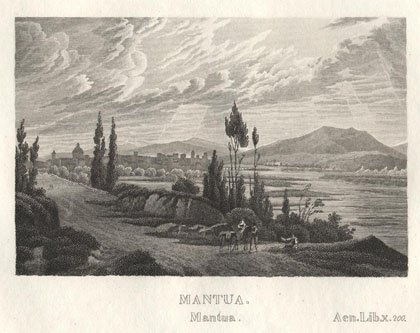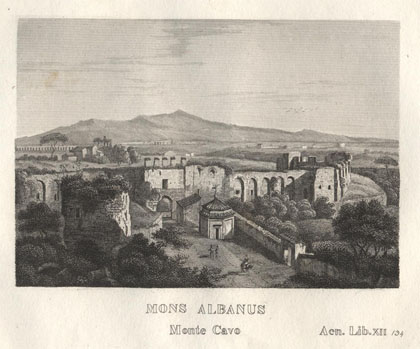![]()
This page is also available in French
![]()
Berlioz visited Posilippo Cave and ‘Virgil’s tomb’ near Naples, and made a visit to the island of Nisida, but we do not have any evidence that he also visited the following locations, which we have included on the website because of their connection with Virgil and his Æneid, which inspired Berlioz’s Les Troyens.
Virgil [Publius Vergilius Maro] was born in 70 BC in Mantua, in Lombardy, Italy.

Thomas Campbell, Lord Rector of Glasgow University, writes in his 1827 book, Letters to the Students of Glasgow on the Epochs of Literature (London, S. and R. Bentley, Dorset Street):
No part of Italy excepting Rome can bring more interesting associations to the lover of antiquity than Latium. Its villas were the retreats of the most illustrious Romans, and we may picture to ourselves Scipio and Lælius amusing themselves with the shells on its shores, or Cicero declaiming amidst the groves of his Tusculum. Here, too, is the Alban mountain, now Monte cavo, where all the cities of the Latin name assembled to hold their fairs and their festivals: and where the gods of Æneid, like those of Iliad on Mout Ida, survey the armies, the cities, camp, and movements of war. The neighbourhood, indeed, is the theatre of the latter half of Virgil’s poem — it has the scene where Nisus and Euryalus fell, and the woods first echoed to the horn of Alecto.

![]()
This page was created on 1st February 2017.
© (unless otherwise stated) Michel Austin and Monir Tayeb for all the pictures and information on this page.
Copyright notice: The texts, photos, images and musical scores on all pages of this site are covered by UK Law and International Law. All rights of publication or reproduction of this material in any form, including Web page use, are reserved. Their use without our explicit permission is illegal.